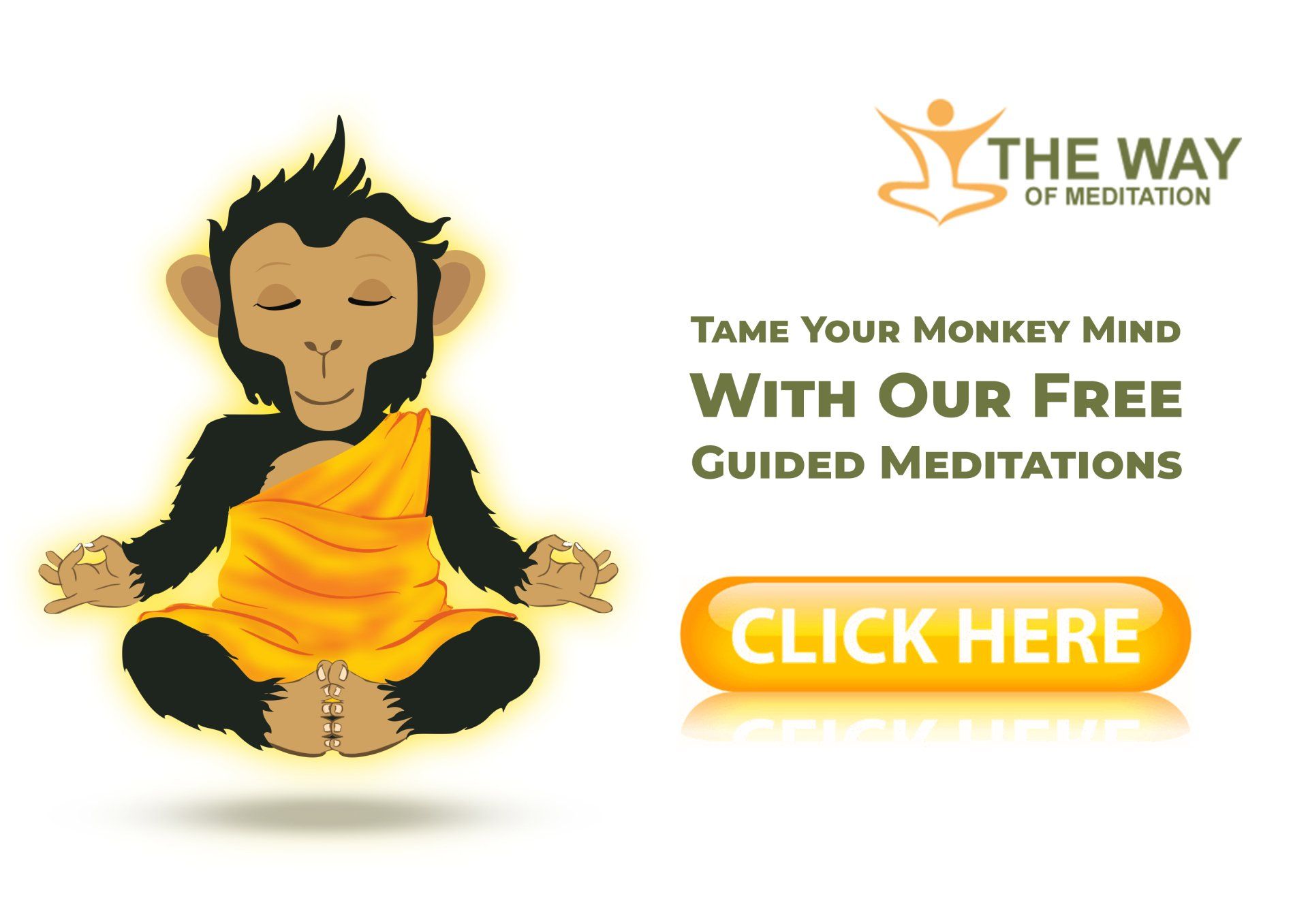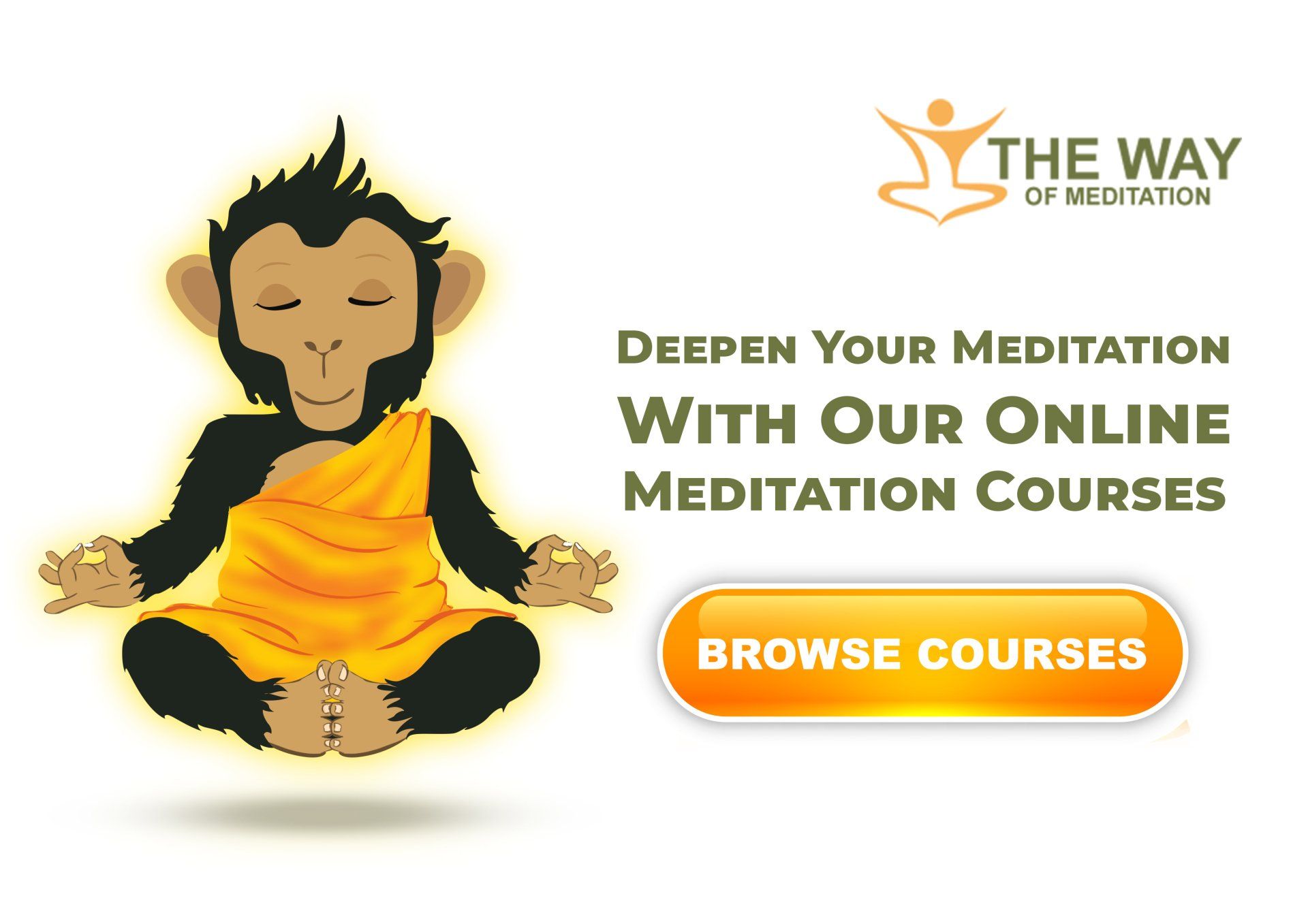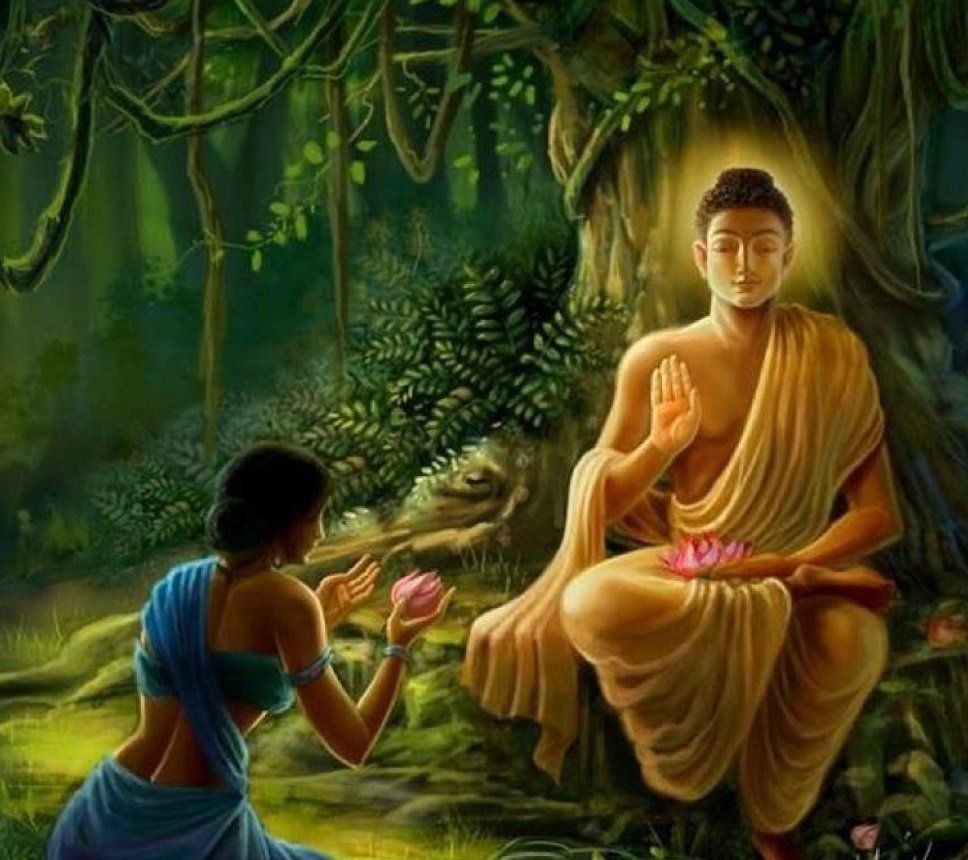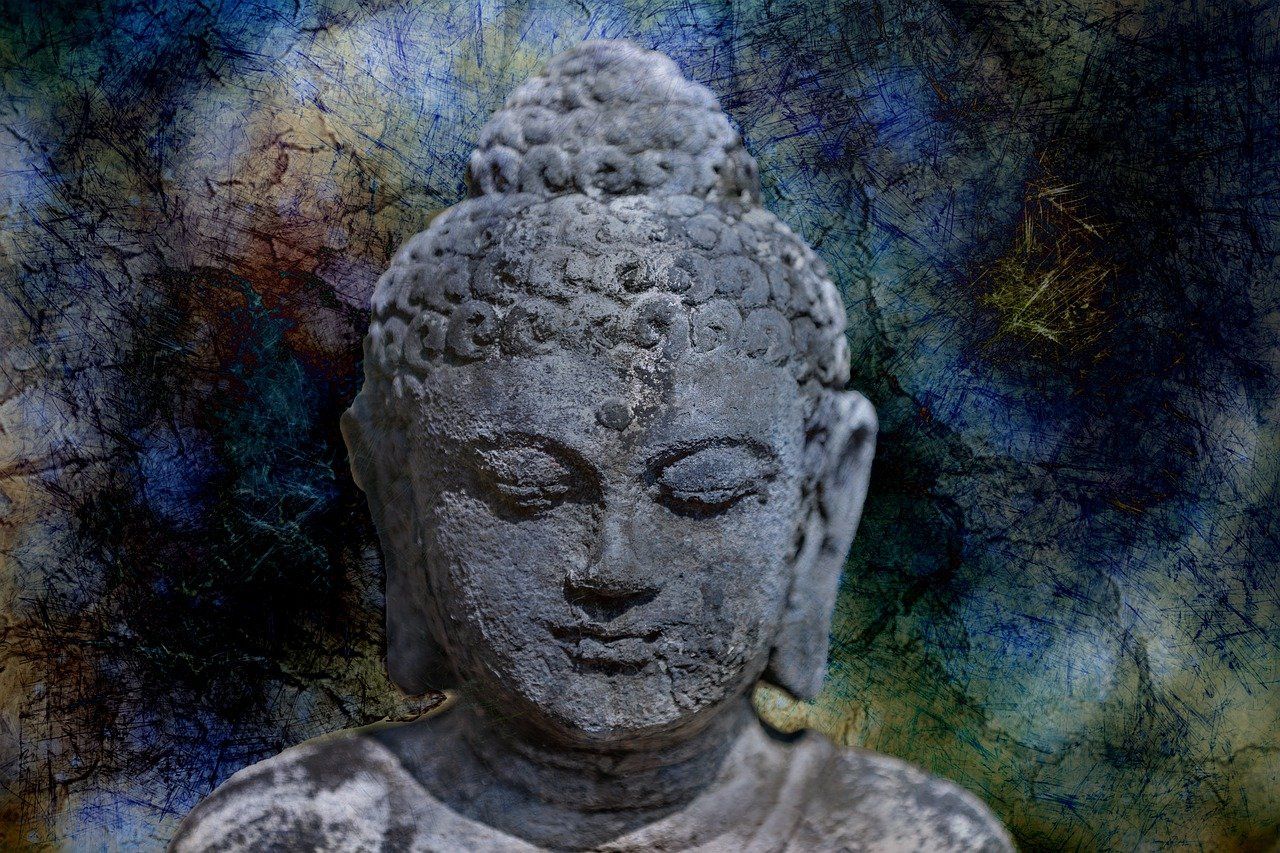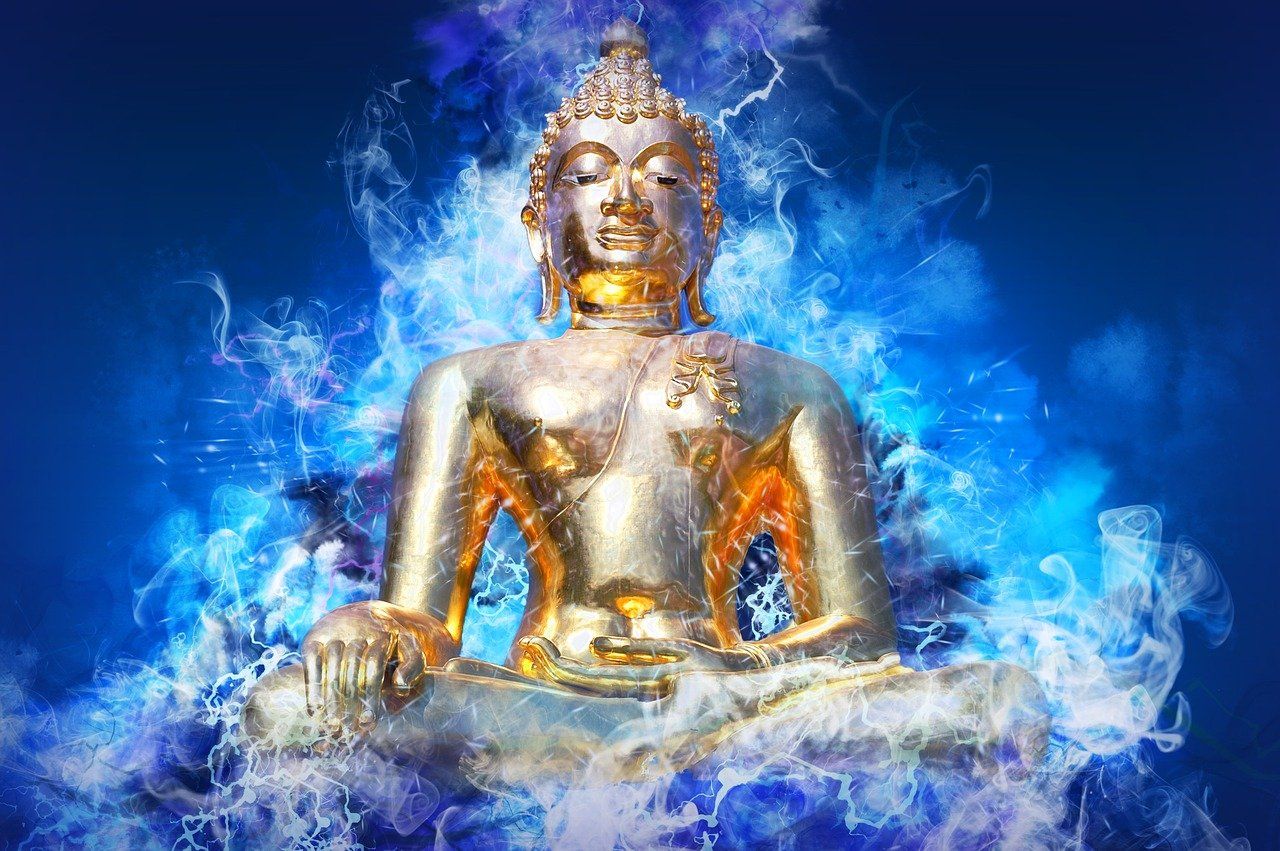The Way of Meditation Blog
Bringing Ancient Wisdom Into The Modern World
5 Ways Buddha Taught To Maintain A Happy Life
Thich Nhat Hanh • October 4, 2016
Why the Buddha Kept Meditating
When I was a young monk, I wondered why the Buddha kept practising mindfulness and meditation even after he had already become a Buddha. Now I find the answer is plain enough to see. Happiness is impermanent, like everything else. In order for happiness to be extended and renewed, you have to learn how to feed your happiness. Nothing can survive without food, including happiness; your happiness can die if you don’t know how to nourish it. If you cut a flower but you don’t put it in some water, the flower will wilt in a few hours.
Even if happiness is already manifesting, we have to continue to nourish it. This is sometimes called conditioning, and it’s very important. We can condition our bodies and minds to happiness with the five practices of letting go, inviting positive seeds, mindfulness, concentration, and insight.
Even if happiness is already manifesting, we have to continue to nourish it. This is sometimes called conditioning, and it’s very important. We can condition our bodies and minds to happiness with the five practices of letting go, inviting positive seeds, mindfulness, concentration, and insight.
1. LETTING GO
The first method of creating joy and happiness is to cast off, to leave behind. There is a kind of joy that comes from letting go. Many of us are bound to so many things. We believe these things are necessary for our survival, our security, and our happiness. But many of these things—or more precisely, our beliefs about their utter necessity—are really obstacles for our joy and happiness.
Sometimes you think that having a certain career, diploma, salary, house, or partner is crucial for your happiness. You think you can’t go on without it. Even when you have achieved that situation, or are with that person, you continue to suffer. At the same time, you’re still afraid that if you let go of that prize you’ve attained, it will be even worse; you will be even more miserable without the object you are clinging to. You can’t live with it, and you can’t live without it.
If you come to look deeply into your fearful attachment, you will realize that it is in fact the very obstacle to your joy and happiness. You have the capacity to let it go. Letting go takes a lot of courage sometimes. But once you let go, happiness comes very quickly. You won’t have to go around searching for it.
Imagine you’re a city dweller taking a weekend trip out to the countryside. If you live in a big metropolis, there’s a lot of noise, dust, pollution, and odors, but also a lot of opportunities and excitement. One day, a friend coaxes you into getting away for a couple of days. At first you may say, “I can’t. I have too much work. I might miss an important call.”
But finally he convinces you to leave, and an hour or two later, you find yourself in the countryside. You see open space. You see the sky, and you feel the breeze on your cheeks. Happiness is born from the fact that you could leave the city behind. If you hadn’t left, how could you experience that kind of joy? You needed to let go.
2. INVITING POSITIVE SEEDS
We each have many kinds of “seeds” lying deep in our consciousness. Those we water are the ones that sprout, come up into our awareness, and manifest outwardly.
The first method of creating joy and happiness is to cast off, to leave behind. There is a kind of joy that comes from letting go. Many of us are bound to so many things. We believe these things are necessary for our survival, our security, and our happiness. But many of these things—or more precisely, our beliefs about their utter necessity—are really obstacles for our joy and happiness.
Sometimes you think that having a certain career, diploma, salary, house, or partner is crucial for your happiness. You think you can’t go on without it. Even when you have achieved that situation, or are with that person, you continue to suffer. At the same time, you’re still afraid that if you let go of that prize you’ve attained, it will be even worse; you will be even more miserable without the object you are clinging to. You can’t live with it, and you can’t live without it.
If you come to look deeply into your fearful attachment, you will realize that it is in fact the very obstacle to your joy and happiness. You have the capacity to let it go. Letting go takes a lot of courage sometimes. But once you let go, happiness comes very quickly. You won’t have to go around searching for it.
Imagine you’re a city dweller taking a weekend trip out to the countryside. If you live in a big metropolis, there’s a lot of noise, dust, pollution, and odors, but also a lot of opportunities and excitement. One day, a friend coaxes you into getting away for a couple of days. At first you may say, “I can’t. I have too much work. I might miss an important call.”
But finally he convinces you to leave, and an hour or two later, you find yourself in the countryside. You see open space. You see the sky, and you feel the breeze on your cheeks. Happiness is born from the fact that you could leave the city behind. If you hadn’t left, how could you experience that kind of joy? You needed to let go.
2. INVITING POSITIVE SEEDS
We each have many kinds of “seeds” lying deep in our consciousness. Those we water are the ones that sprout, come up into our awareness, and manifest outwardly.
So in our own consciousness there is hell, and there is also paradise. We are capable of being compassionate, understanding, and joyful. If we pay attention only to the negative things in us, especially the suffering of past hurts, we are wallowing in our sorrows and not getting any positive nourishment. We can practice appropriate attention, watering the wholesome qualities in us by touching the positive things that are always available inside and around us. That is good food for our mind.
One way of taking care of our suffering is to invite a seed of the opposite nature to come up. As nothing exists without its opposite, if you have a seed of arrogance, you have also a seed of compassion. Every one of us has a seed of compassion. If you practice mindfulness of compassion every day, the seed of compassion in you will become strong. You need only concentrate on it and it will come up as a powerful zone of energy.
Naturally, when compassion comes up, arrogance goes down. You don’t have to fight it or push it down. We can selectively water the good seeds and refrain from watering the negative seeds. This doesn’t mean we ignore our suffering; it just means that we allow the positive seeds that are naturally there to get attention and nourishment.
3. MINDFULNESS-BASED JOY
Mindfulness helps us not only to get in touch with suffering, so that we can embrace and transform it, but also to touch the wonders of life, including our own body. Then breathing in becomes a delight, and breathing out can also be a delight. You truly come to enjoy your breathing.
A few years ago, I had a virus in my lungs that made them bleed. I was spitting up blood. With lungs like that, it was difficult to breathe, and it was difficult to be happy while breathing. After treatment, my lungs healed and my breathing became much better. Now when I breathe, all I need to do is to remember the time when my lungs were infected with this virus. Then every breath I take becomes really delicious, really good.
When we practice mindful breathing or mindful walking, we bring our mind home to our body and we are established in the here and the now. We feel so lucky; we have so many conditions of happiness that are already available. Joy and happiness come right away. So mindfulness is a source of joy. Mindfulness is a source of happiness.
Mindfulness is an energy you can generate all day long through your practice. You can wash your dishes in mindfulness. You can cook your dinner in mindfulness. You can mop the floor in mindfulness. And with mindfulness you can touch the many conditions of happiness and joy that are already available. You are a real artist. You know how to create joy and happiness any time you want. This is the joy and the happiness born from mindfulness.
One way of taking care of our suffering is to invite a seed of the opposite nature to come up. As nothing exists without its opposite, if you have a seed of arrogance, you have also a seed of compassion. Every one of us has a seed of compassion. If you practice mindfulness of compassion every day, the seed of compassion in you will become strong. You need only concentrate on it and it will come up as a powerful zone of energy.
Naturally, when compassion comes up, arrogance goes down. You don’t have to fight it or push it down. We can selectively water the good seeds and refrain from watering the negative seeds. This doesn’t mean we ignore our suffering; it just means that we allow the positive seeds that are naturally there to get attention and nourishment.
3. MINDFULNESS-BASED JOY
Mindfulness helps us not only to get in touch with suffering, so that we can embrace and transform it, but also to touch the wonders of life, including our own body. Then breathing in becomes a delight, and breathing out can also be a delight. You truly come to enjoy your breathing.
A few years ago, I had a virus in my lungs that made them bleed. I was spitting up blood. With lungs like that, it was difficult to breathe, and it was difficult to be happy while breathing. After treatment, my lungs healed and my breathing became much better. Now when I breathe, all I need to do is to remember the time when my lungs were infected with this virus. Then every breath I take becomes really delicious, really good.
When we practice mindful breathing or mindful walking, we bring our mind home to our body and we are established in the here and the now. We feel so lucky; we have so many conditions of happiness that are already available. Joy and happiness come right away. So mindfulness is a source of joy. Mindfulness is a source of happiness.
Mindfulness is an energy you can generate all day long through your practice. You can wash your dishes in mindfulness. You can cook your dinner in mindfulness. You can mop the floor in mindfulness. And with mindfulness you can touch the many conditions of happiness and joy that are already available. You are a real artist. You know how to create joy and happiness any time you want. This is the joy and the happiness born from mindfulness.
4. CONCENTRATION
Concentration is born from mindfulness. Concentration has the power to break through, to burn away the afflictions that make you suffer and to allow joy and happiness to come in.
To stay in the present moment takes concentration. Worries and anxiety about the future are always there, ready to take us away. We can see them, acknowledge them, and use our concentration to return to the present moment.
When we have concentration, we have a lot of energy. We don’t get carried away by visions of past suffering or fears about the future. We dwell stably in the present moment so we can get in touch with the wonders of life, and generate joy and happiness.
Concentration is always concentration on something. If you focus on your breathing in a relaxed way, you are already cultivating an inner strength. When you come back to feel your breath, concentrate on your breathing with all your heart and mind. Concentration is not hard labor. You don’t have to strain yourself or make a huge effort. Happiness arises lightly and easily.
5. INSIGHT
With mindfulness, we recognize the tension in our body, and we want very much to release it, but sometimes we can’t. What we need is some insight.
Insight is seeing what is there. It is the clarity that can liberate us from afflictions such as jealousy or anger, and allow true happiness to come. Every one of us has insight, though we don’t always make use of it to increase our happiness.
Concentration is born from mindfulness. Concentration has the power to break through, to burn away the afflictions that make you suffer and to allow joy and happiness to come in.
To stay in the present moment takes concentration. Worries and anxiety about the future are always there, ready to take us away. We can see them, acknowledge them, and use our concentration to return to the present moment.
When we have concentration, we have a lot of energy. We don’t get carried away by visions of past suffering or fears about the future. We dwell stably in the present moment so we can get in touch with the wonders of life, and generate joy and happiness.
Concentration is always concentration on something. If you focus on your breathing in a relaxed way, you are already cultivating an inner strength. When you come back to feel your breath, concentrate on your breathing with all your heart and mind. Concentration is not hard labor. You don’t have to strain yourself or make a huge effort. Happiness arises lightly and easily.
5. INSIGHT
With mindfulness, we recognize the tension in our body, and we want very much to release it, but sometimes we can’t. What we need is some insight.
Insight is seeing what is there. It is the clarity that can liberate us from afflictions such as jealousy or anger, and allow true happiness to come. Every one of us has insight, though we don’t always make use of it to increase our happiness.
Often, we just bite onto our craving or grudge, and let the hook take us. We get caught and attached to these situations that are not worthy of our concern. If mindfulness and concentration are there, then insight will be there and we can make use of it to swim away, free.
In springtime when there is a lot of pollen in the air, some of us have a hard time breathing due to allergies. Even when we aren’t trying to run five miles and we just want to sit or lie down, we can’t breathe very well. So in wintertime, when there’s no pollen, instead of complaining about the cold, we can remember how in April or May we couldn’t go out at all. Now our lungs are clear, we can take a brisk walk outside and we can breathe very well. We consciously call up our experience of the past to help ourselves treasure the good things we are having right now.
In the past we probably did suffer from one thing or another. It may even have felt like a kind of hell. If we remember that suffering, not letting ourselves get carried away by it, we can use it to remind ourselves, “How lucky I am right now. I’m not in that situation. I can be happy”—that is insight; and in that moment, our joy, and our happiness can grow very quickly.
The essence of our practice can be described as transforming suffering into happiness. It’s not a complicated practice, but it requires us to cultivate mindfulness, concentration, and insight.
It requires first of all that we come home to ourselves, that we make peace with our suffering, treating it tenderly, and looking deeply at the roots of our pain. It requires that we let go of useless, unnecessary sufferings and take a closer look at our idea of happiness.
Finally, it requires that we nourish happiness daily, with acknowledgement, understanding, and compassion for ourselves and for those around us. We offer these practices to ourselves, to our loved ones, and to the larger community. This is the art of suffering and the art of happiness. With each breath, we ease suffering and generate joy. With each step, the flower of insight blooms.
In springtime when there is a lot of pollen in the air, some of us have a hard time breathing due to allergies. Even when we aren’t trying to run five miles and we just want to sit or lie down, we can’t breathe very well. So in wintertime, when there’s no pollen, instead of complaining about the cold, we can remember how in April or May we couldn’t go out at all. Now our lungs are clear, we can take a brisk walk outside and we can breathe very well. We consciously call up our experience of the past to help ourselves treasure the good things we are having right now.
In the past we probably did suffer from one thing or another. It may even have felt like a kind of hell. If we remember that suffering, not letting ourselves get carried away by it, we can use it to remind ourselves, “How lucky I am right now. I’m not in that situation. I can be happy”—that is insight; and in that moment, our joy, and our happiness can grow very quickly.
The essence of our practice can be described as transforming suffering into happiness. It’s not a complicated practice, but it requires us to cultivate mindfulness, concentration, and insight.
It requires first of all that we come home to ourselves, that we make peace with our suffering, treating it tenderly, and looking deeply at the roots of our pain. It requires that we let go of useless, unnecessary sufferings and take a closer look at our idea of happiness.
Finally, it requires that we nourish happiness daily, with acknowledgement, understanding, and compassion for ourselves and for those around us. We offer these practices to ourselves, to our loved ones, and to the larger community. This is the art of suffering and the art of happiness. With each breath, we ease suffering and generate joy. With each step, the flower of insight blooms.
Written by Thich Nhat Hanh
From “ No Mud, No Lotus: The Art of Transforming Suffering “
Get A FREE
Guided Meditation Series
with Chad Foreman

In today’s fast-paced world, the mind often races, driven by the demands of work, family, and personal ambitions. Meditation is commonly seen as a practice to calm the mind, foster inner peace, and connect with deeper aspects of existence. Yet, one crucial element often overlooked is the state of the body, particularly the nervous system. Relaxing the nervous system isn’t just a preparatory step; it is foundational for unlocking the deeper states of awareness and tranquility that meditation promises. Drawing insights from my journey and teachings, we will explore why this is so vital and how it transforms the meditative experience.




